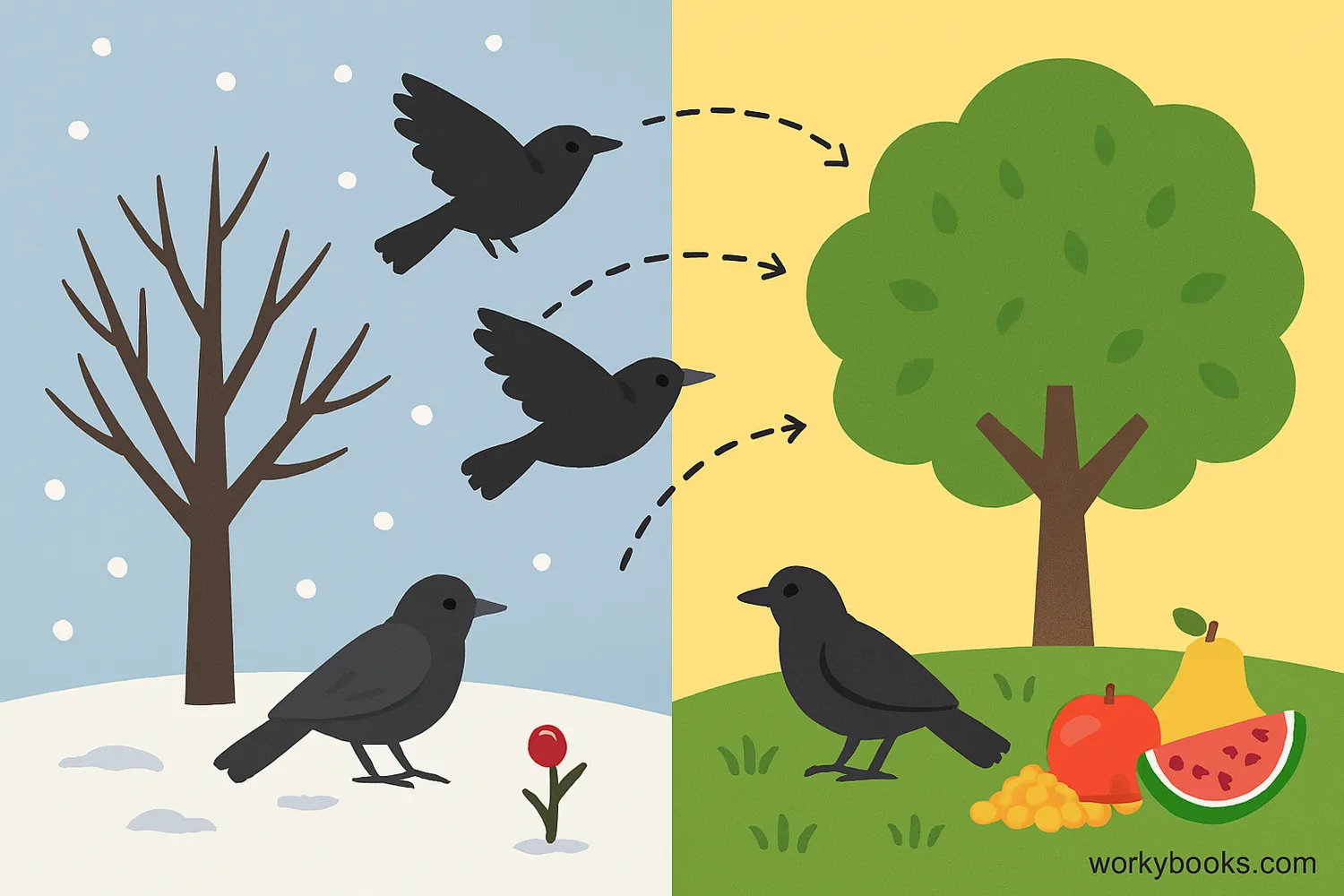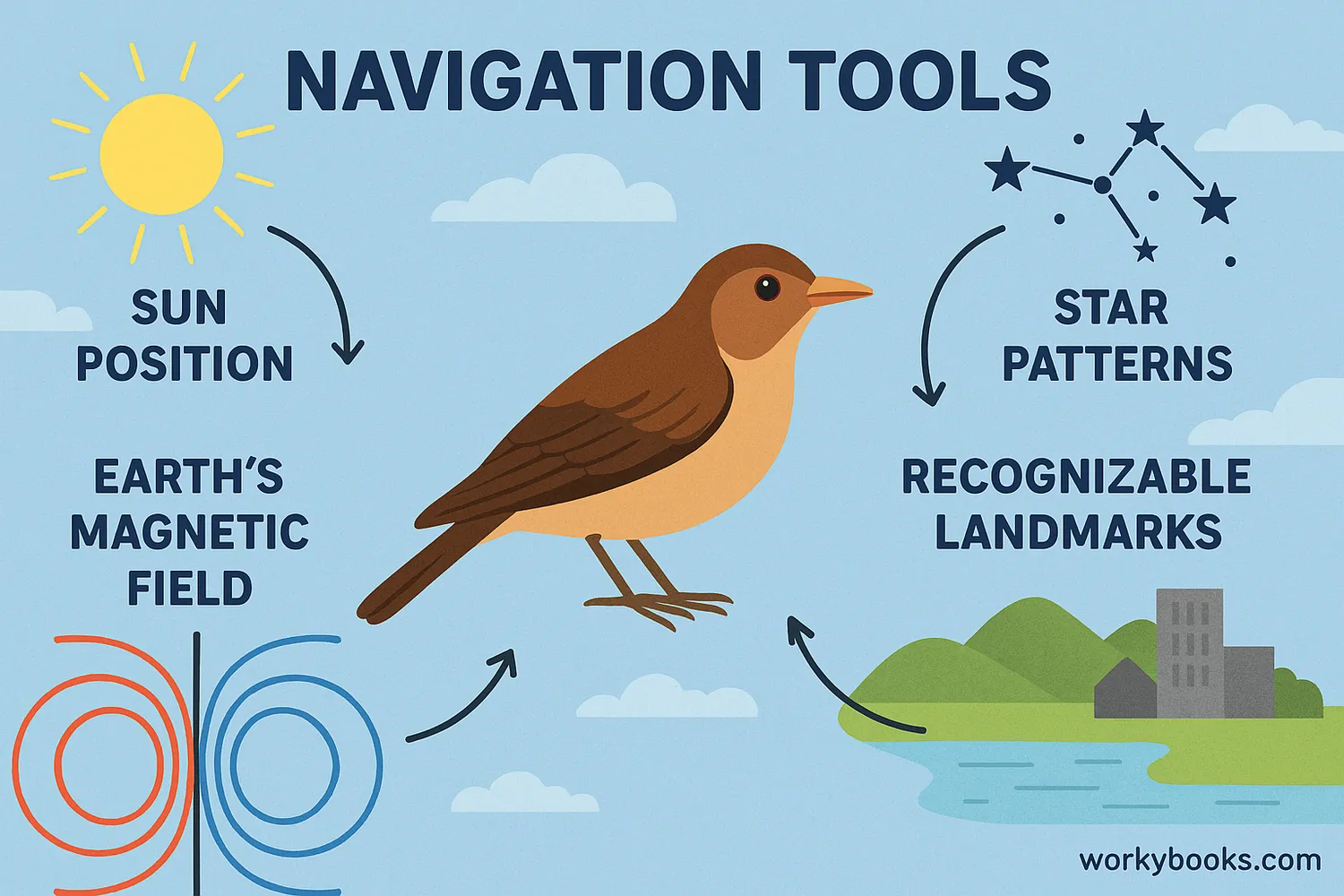Bird Migration - Definition, Examples, Quiz, FAQ, Trivia
Discover how and why birds travel amazing distances each year
What is Bird Migration?

Bird migration is the regular seasonal movement, often north and south, between breeding and wintering grounds. Many bird species migrate to take advantage of seasonal differences in resources like food and nesting locations.
Migration allows birds to avoid harsh weather conditions and find abundant food supplies throughout the year. Some birds travel incredible distances—the Arctic Tern holds the record by flying about 44,000 miles round trip between the Arctic and Antarctic each year!
Migration Fact!
Not all birds migrate. Those that stay year-round are called "permanent residents."
Why Do Birds Migrate?

Birds migrate for two main reasons: to find food and to find good places to raise their young. As seasons change, so does the availability of resources:
Food Scarcity
Insect-eating birds must leave when insects disappear in cold weather
Breeding Needs
Birds seek safe nesting areas with abundant food for their chicks
Day Length
Shorter days in winter mean less time to find food
Weather Changes
Extreme cold makes survival difficult for many species
Genetic Programming
Migration patterns are instinctive behaviors passed through generations
Migration Trigger
Changing day length is the primary cue that tells birds when to begin their migrations.
Types of Bird Migration
Bird migration takes many different forms. Not all birds undertake long journeys between continents—some move much shorter distances:
Long-Distance Migration
Travel between continents (e.g., Warblers, Shorebirds)
Short-Distance Migration
Movement within a continent (e.g., American Robins)
Altitudinal Migration
Moving up and down mountains (e.g., Clark's Nutcracker)
Nomadic Migration
Irregular movement following food sources (e.g., Crossbills)
Diurnal Migration
Flying during daylight hours (e.g., Hawks, Swallows)
Nocturnal Migration
Flying at night (e.g., Warblers, Sparrows)
Most small birds migrate at night, which helps them avoid predators, take advantage of calmer atmospheric conditions, and still have daytime hours to stop and feed.
Flyways
Birds follow established routes called flyways—there are four major flyways in North America: Atlantic, Mississippi, Central, and Pacific.
Bird Migration Knowledge Check
Test your bird migration knowledge with this quiz! Answer all 5 questions to see how much you've learned.
Frequently Asked Questions
Here are answers to some common questions about bird migration:
Amazing Bird Migration Facts
Discover some incredible facts about bird migration!
Marathon Flyers
The Arctic Tern makes the longest migration of any bird, traveling about 44,000 miles round trip between the Arctic and Antarctic each year. Over its lifetime of about 30 years, this equals traveling to the moon and back three times!
Built-in Compass
Birds can detect Earth's magnetic field using special cells in their eyes that contain magnetite, an iron-based mineral. This helps them navigate even on cloudy nights when stars aren't visible.
High Altitude Experts
Bar-headed Geese migrate over the Himalayas, flying at altitudes up to 29,000 feet where oxygen levels are very low. They have special hemoglobin that binds oxygen more efficiently than other birds.
Speed Demons
The Great Snipe holds the record for fastest long-distance migration, flying up to 60 mph for over 4,000 miles. They can complete their migration from Scandinavia to sub-Saharan Africa in just 2 days!






